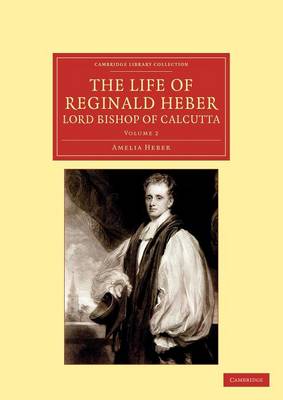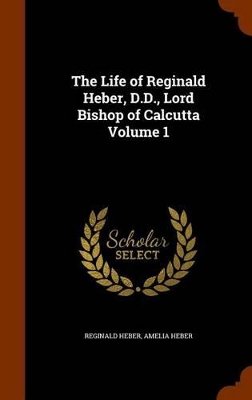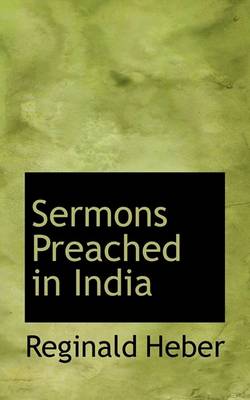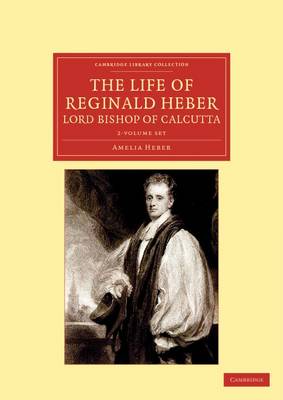Cambridge Library Collection - Religion
1 primary work • 5 total works
Volume 2
Reginald Heber (1783–1826), had long been interested in the Church of England's overseas missions when he was appointed second Bishop of Calcutta in 1823. The diocese had been established only in 1814, and included India, Southern Africa and Australia; Heber's short episcopate involved much travelling around his scattered flock. His widow, Amelia published his Sermons and Narrative of a Journey through the Upper Provinces of India (also available in this series), before writing this two-volume biography, published in 1830 and also containing previously unpublished writings by Heber. Volume 2 begins in 1820 and describes Heber's time as Bishop, focusing especially on his travels and the difficulties he encountered. Heber was unusually sympathetic towards the Indian people, and worked closely with other religious leaders; he was also willing to see failings in British rule. An appendix includes letters and poems, and tributes by others, including Southey and Mrs Hemans.
The Life of Reginald Heber, D.D., Lord Bishop of Calcutta Volume 1
by Reginald Heber and Amelia Heber
Published 1 June 2012
Reginald Heber (1783-1826), had for a long time been interested in the Church of England's overseas missions when he was appointed second Bishop of Calcutta in 1823. The diocese had been established only in 1814, and included India, Southern Africa and Australia; Heber's short episcopate involved much travelling around his scattered flock. His widow, Amelia published his Sermons and Narrative of a Journey through the Upper Provinces of India (also available in this series), before writing this two-volume biography, published in 1830 and also containing previously unpublished writings by Heber. Volume 1 focuses on Heber's early life and career, including travels across Scandinavia and Russia, and describes how he became active in literary as well as church matters, publishing poetry and the hymns for which he is now best remembered, and working with the Church Missionary Society. His unfinished History of the Cossaks is included in an appendix.
Reginald Heber (1783-1826), second bishop of Calcutta, was appointed to the role in 1823, and had for a long time been interested in the Church of England's overseas missions. His diocese in the subcontinent had been established less than a decade before, in 1814, and included India, southern Africa and Australia. Heber travelled extensively throughout, visiting remote Anglican communities and later publishing journals about his travels. In addition, he was well-known as a hymn-writer. Sermons Preached in India, however, was published posthumously in 1829, and edited by his widow, Amelia. This volume also illustrates Heber's zeal to carry out his work across his diocese, the location of his sermons range from Delhi to Dum Dum. Missionaries would have been a significant part of his diocese, and these homilies reflect many of the difficulties faced by Anglicans living in a place that had its own strong religious beliefs.
The Life of Reginald Heber, D.D., Lord Bishop of Calcutta 2 Volume Set
by Amelia Heber
Published 22 March 2012
Reginald Heber (1783-1826), had for a long time been interested in the Church of England's overseas missions when he was appointed second Bishop of Calcutta in 1823. The diocese had been established only in 1814, and included India, Southern Africa and Australia; Heber's short episcopate involved much travelling around his scattered flock. His widow, Amelia published his Sermons and Narrative of a Journey through the Upper Provinces of India (also available in this series), before writing this two-volume biography, published in 1830 and also containing previously unpublished writings by Heber. Volume 1 deals with his early life, including a journey across Scandinavia and Russia. Volume 2 covers the Indian years in detail. Heber was unusually sympathetic towards the Indian people, and worked closely with other religious leaders. The appendices include unpublished poetry and letters, missionary documents, his unfinished History of the Cossaks, and tributes to Heber by others.
The Life of Reginald Heber, D.D., Lord Bishop of Calcutta: Volume 2
by Amelia Heber
Published 5 May 2013
Reginald Heber (1783-1826), had long been interested in the Church of England's overseas missions when he was appointed second Bishop of Calcutta in 1823. The diocese had been established only in 1814, and included India, Southern Africa and Australia; Heber's short episcopate involved much travelling around his scattered flock. His widow, Amelia published his Sermons and Narrative of a Journey through the Upper Provinces of India (also available in this series), before writing this two-volume biography, published in 1830 and also containing previously unpublished writings by Heber. Volume 2 begins in 1820 and describes Heber's time as Bishop, focusing especially on his travels and the difficulties he encountered. Heber was unusually sympathetic towards the Indian people, and worked closely with other religious leaders; he was also willing to see failings in British rule. An appendix includes letters and poems, and tributes by others, including Southey and Mrs Hemans.




